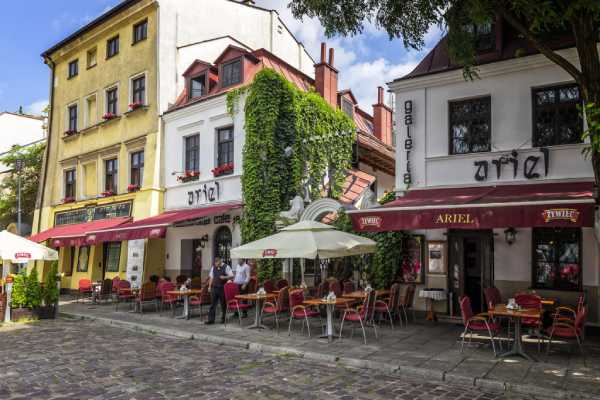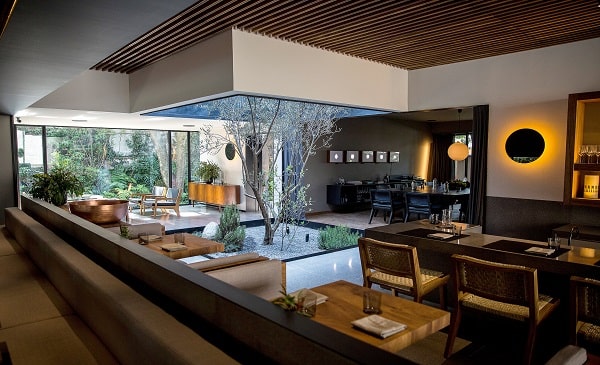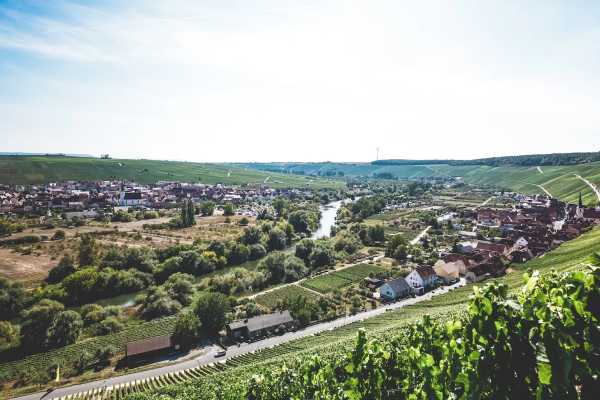The 6 Most Beautiful Jewish Neighborhoods In The World
The Jewish people have suffered several diasporas in their lives, but it is the one decreed by the Romans in the year 135 that has had the greatest consequences. Since then, a multitude of Jews were forced to settle in distant places; many of them, like Spain, at that time were the limits of the known world.
With the discovery of America that diaspora expanded even more. That is the origin of Jewish neighborhoods, urban sectors where Jewish communities live according to their customs.
Although in some latitudes, especially in Europe, life in these districts has declined somewhat (especially due to the effects of the Holocaust), there are other Jewish neighborhoods that are still very dynamic. In this article we show you some of the most beautiful ones.

Budapest Jewish Quarter
Budapest was for a long time one of the European capitals with the greatest presence of Jewish culture. It is no coincidence that the founder of Zionism, Theodor Herzl, was born very close to this neighborhood.
An urban environment that, still today, shows that heritage. Above all thanks to its Synagogue, one of the most beautiful in all of Europe. In its vicinity, we also find the Temple of Heroes, a prayer building erected in memory of the hundreds of thousands of Hungarian Jews murdered during the Holocaust.
Let us remember that it was in this country where Nazism was used with special viciousness and efficiency, murdering around 400,000 Jews in just over a year. The Tree of Life remember this sad episode.
It is a sculpture that imitates a willow and on whose leaves some of the names of the victims are engraved. However, there is also room for joy in the Jewish Quarter; In fact, it is one of the city’s nightlife centers.
Jewish quarter of Krakow
Poland was one of the countries that had the most Jews in its society until the Nazi invasion. Today there are only a few thousand left, but we can still visit the neighborhoods where they lived to collect the testimony of that heritage.
One of the most interesting is Kazimierz, the Jewish quarter of Krakow. We recommend a walk along Ulica Szeroka, one of the streets that will best immerse you in the atmosphere of Kazimierz.
There are a large number of synagogues, up to seven, to visit. Having been a Jewish neighborhood with a long history, we can find synagogues older than many of the ones we visit today (for example, in Budapest itself).
In fact, the Synagogue of Isaac, from the 18th century, is a good example of this. Additionally, you can visit some of the areas that served as the setting for the filming of Schindler’s List. Or see where notable Jewish personalities were born, such as Helena Rubinstein, famous throughout the world for being the founder of a famous cosmetics firm.
And, if you want to go deeper, you can always cross the river and take a tour of the old Krakow ghetto (of which the wall remains) and also Oskar Schindler’s Factory.
Prague Jewish Quarter
Prague was another of the cities that hosted the most Jews in the past. In fact, many of its great personalities (for example, Franz Kafka) are of Jewish descent. Also one of the most famous legends of Jewish origin, the legend of the Golem, emerged in this Central European city.
Josefov, which is the name of the neighborhood, still houses 6 synagogues and has preserved the Hebrew atmosphere very well. Without a doubt, its most famous and visited place is the Jewish cemetery, where a multitude of tombstones are packed together.
You also cannot miss a visit to the house museum of one of the most famous European Jews, Kafka, located at 5 Radnice Street.
Although, yes, do not make the common mistake of thinking that this essential writer is buried in the aforementioned cemetery. To visit his tombstone you will have to go to the farthest New Jewish Cemetery.
Amsterdam Jewish Quarter
Amsterdam’s Jewish Quarter was especially thriving, especially because it received many of the Jews fleeing forced conversions in Spain and Portugal. In fact, personalities as important as the philosopher Spinoza were of Iberian descent (Spinoza is nothing other than the Dutch adaptation of Espinosa).
That is why it should not surprise us that one of its most interesting monuments, the Portuguese Synagogue, is called that. This process began in the 15th century and was so powerful that it turned the Jewish quarter of Amsterdam into one of the most dynamic in Europe. Up to 60,000 Jews lived there until the Nazi occupation, which was, as you can imagine, a before and after.
Many Dutch Jews were deported to concentration camps, the case of Anne Frank being the most famous and the one that best represents the scale of this extermination.
If you are interested in the figure of this young woman, you can visit the Anne Frank House, the most visited place in the entire city. And, to delve deeper into the history of the neighborhood, there is nothing better than taking a trip to the Jewish Museum, where you will learn about the history of these Sephardic Jews. To a certain extent, as Spaniards, it is a museum that also tells us a lot about our own history.
New York Jewish Quarter
Until now we have been in Europe, but it is time to jump across the pond, because the Jewish community also settled intensely in the New Continent. An example of this is New York, which is home to the Brooklyn neighborhood of Williamsburg, with one of the largest communities of Orthodox Jews outside of Israel.
This neighborhood is very large, in fact, it is also famous for being one of the hipster epicenters of the city. The area with the most Jewish atmosphere is south of the Williamsbrug Bridge, along Lee Avenue.
The contrast between the two areas is notable, so in the Jewish area you will find more austerity, but also interesting elements such as the Elridge Street Synagogue and the Museum of Jewish Heritage.
Jewish Quarter of Gerona
We finish the list with one of the best preserved Jewish neighborhoods with a medieval flavor in all of Europe. It is thought to have been the space of important Jewish Kabbalists and philosophers and its antiquity is notable: the 12th century.
Its state of conservation, as we have told you, is extraordinary, so it is best to get lost in its streets. It is very interesting to enter Carrer de la Força, the rise of the Virgen de la Pera, the Pabordia and the Placeta del Institut Vell.
If you want to complement your visit with some information, there is nothing better than taking a trip to the Museum of Jewish History. The proposal of this destination is to get to know the atmosphere of a medieval Jewish neighborhood, an experience very different from that of other European Jewish neighborhoods, very defined by much later architecture such as baroque or neoclassical.






